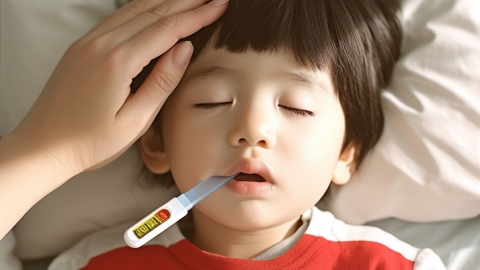How to perform physical cooling for a child with fever
Fever, or pyrexia, in children can generally be managed with physical cooling methods such as reducing clothing to aid heat dissipation, wiping the body with lukewarm water, applying cool compresses to the forehead, ensuring adequate hydration, and adjusting the indoor environment. Scientific application of these measures can help lower body temperature. If any abnormalities occur, prompt medical attention is recommended. Detailed methods are as follows:

1. Reduce clothing to promote heat dissipation: Remove excess clothing and heavy bedding from the child, and dress them in loose, breathable cotton garments to allow natural dissipation of body heat. Avoid complete exposure, especially ensuring the abdomen is protected from cold to prevent discomfort caused by excessive cooling.
2. Wipe the body with lukewarm water: Prepare water at a temperature of 32–34°C. Soak a soft towel in the water, wring it until slightly dry, and gently wipe areas with dense blood vessels such as the child's forehead, neck, armpits, groin, and limbs. Each wiping session should last 10–15 minutes, allowing the evaporation of water to remove surface body heat.
3. Apply cool compresses to the forehead: Dip a towel in cool water, wring it dry, and place it on the child's forehead, replacing it every 5–10 minutes. Alternatively, a fever-reducing patch may be applied to the forehead to alleviate discomfort such as headache and irritability caused by fever through localized cooling.
4. Ensure adequate hydration: Encourage the child to drink plenty of warm water. Increased fluid intake promotes metabolism, helping the body dissipate excess heat through sweating and urination, while also preventing dehydration that may result from fever and maintaining normal physiological functions.
5. Adjust the indoor environment: Maintain good indoor air circulation by regularly opening windows for ventilation. Keep the room temperature between 24–26°C and humidity at 50%–60%. Avoid excessively high temperatures or dry air, creating a comfortable environment for the child to dissipate heat.
Physical cooling is suitable for cases where body temperature is below 38.5°C. If the temperature exceeds 38.5°C, medication should be used under a doctor's guidance alongside physical cooling methods. Closely monitor the child's condition during the process; if chills or pale skin occur, discontinue immediately. Never use alcohol for sponge baths, as it may irritate the skin or cause alcohol poisoning.









